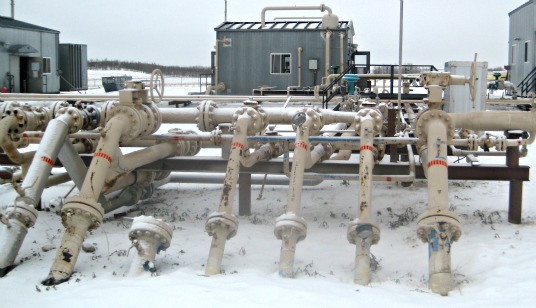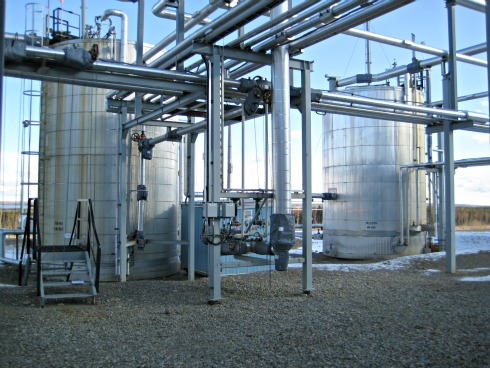- Air Homepage
- Air Quality Testing
- Natural Gas Leak Detection
Natural Gas Leak Detection: Cleaner Air & Cost Savings!
Besides natural gas leak detection and repair programs, the consulting company noted below does fugitive emissions studies for industrial companies.
LDAR for compliance and profits 💰How would you feel if invisible gas leaks at your industrial facility weren't just costing you money, but risking massive fines and safety hazards too? Find out how advanced Leak Detection and Repair (LDAR) programs can boost your bottom line by fixing fugitive emissions and securing your overall safety and environmental compliance.
LDAR, as we call it, involves inspecting and maintaining pipes, fittings, valves, flanges, and other features that can leak gas, resulting in both environmental issues and loss of valuable products. We're fixing problems like never before thanks to new developments in pinhole leak detection and more stringent government standards.
How is this useful? Emissions and air quality are strictly regulated at industrial sites. Detecting and fixing gas leaks isn't just about compliance, it's also about saving money. Because leaks can cause significant product losses, impact facility efficiency, and cost you money, leak detection methods and repair strategies can help operators optimize their processes.
A company's reputation can be enhanced by demonstrating a commitment to environmental responsibility through effective leak detection and repair programs. Natural gas leak detection is vital for operators to ensure compliance, reduce costs, demonstrate environmental responsibility and make informed decisions.
Plant operators may have to start a leak mitigation program that at least meets certain protocols for managing fugitive emissions and reducing or eliminating air pollution. Governments or other boards that oversee industry practices may outline protocols.
Hazardous Gas Detection
With an LDAR program, energy facilities can find and catalog big leaks that leak methane and its equivalents, some of which are greenhouse gases (GHG's). After recording the leak points, they're tested for leaks. If it's simple enough, fix big leaks that could cause health, safety, odour, or environmental problems. In that case, the gas loss and repair costs must be compared so that economically feasible repairs can be made as soon as possible.
Natural Gas Leak Detection Methods
What's the best way to do this? Here's a comparison of leak detection methods. Taking a look at all the equipment and connections on site and flagging them for repair is one way to do it. This method minimizes program costs, but no data is kept that could be used for strategic planning. Therefore, planning a schedule for future leak detection surveys and quality control might be hard.
In a second method, gas leak detectors assign a code to each component before testing and classifying fugitive testing results. A small leak is categorized as less than 1000 ppm, a large leak is over 10000 ppm, and a medium leak is between these two levels. Using the three-stratum approach, leaks are estimated, so operators can keep up a maintenance program, catching leaks early. The program might require a significant investment. Nevertheless, once the database is set up, it can be reused for a variety of things.
The Calvin Consulting Group Ltd. in southern Alberta came up with an effective intermediate plan. Because these plants have to report greenhouse gas emissions to the government every year, they've been using LDAR data to support mandatory GHG calculations. According to Calvin Consulting, companies should use the more-efficient scanning survey method so they can get the data they need to make economic decisions about whether or not to fix leaks.
Regulations typically state that operators need to decide when to fix the leaking components:
1) The leaking component must be repaired within 24 hours if it poses a health, safety, or environmental risk, or if it could cause off-site odors.
2) Unless a large leak requires a shutdown, a large leak must be repaired within 30 days if it doesn't pose a threat to health, safety, or the environment, if possible.
3) For large leaks. the component MUST be repaired or replaced during the next scheduled shutdown of the equipment if not already repaired.
Every time a component is repaired, it has to be retested within seven days. Plant personnel can re-test using a soap test or something similar. Leak Repair Tracking Forms must also track retesting information. All readily accessible components that are applicable to LDAR and all applicable connections get tested.
What does Calvin Consulting do?
The first thing they do is come up with LDAR Quality Assurance Plans (QAPs) for plant operators. Regulators can audit these plans fairly easily, making THAT unwelcome step a lot easier. Basically, QAPs describe plan objectives, data control systems, leak detection and repair programs a list of targeted components, natural gas leak detection methods, and gas detection meters and schedules.
To ensure a foolproof plan for each facility, quality control procedures are outlined in great detail.
Second, the environmental consultancy comes to the site with natural gas leak detection instruments. There are normally two people on each team, a scientist and a technician, and they bring the needed equipment. Using the most appropriate safe, inexpensive and easy-to-use device, we get empirical data in accordance with the United States EPA's Method 21, which satisfies Canadian governing bodies too. A leak inventory is pulled from the gas detection equipment output, and important leaks are photographed and recorded.
After that, the data processing team sends preliminary leak detection reports to facility staff. For each major leak on site, leak repair tracking forms are ready for the plant operator to fill out. There's a photo and a list of required data for each leaking item, like the date and location, the quantity and cost of the leak, a record of the actions taken, and a place for staff to indicate verification. After completion, the form tells the operator when and how the leak was fixed or why it wasn't.
Then, quantifying emissions can be done in a variety of ways. The EPA's Three-Tier Approach is sometimes used. Calvin Consulting performs these calculations using the emission factors provided by the Canadian Association of Petroleum Producers CAPP and the Canadian Council of Ministers of the Environment as appropriate, since our LDAR clients are located in Canada. All connections and components are assumed to be in service 24 hours a day, every day in these calculations. Realistically, this isn't likely to be the case, so this default procedure is probably an overestimate and can be modified with utilization data.
Finally, the official report is delivered. For convenience and efficiency, operators usually use the photos and Leak Repair Tracking Forms provided by Calvin Consulting after a report is produced and as repairs are made. These forms need to be kept at the plant for a minimum of ten years.
We've been out to hundreds of oil and gas facilities in Western Canada. We've been out to hundreds of oil and gas facilities in Western Canada. Consultants can use the data for other regulatory compliance programs, saving substantial costs for multiple programs in the long run.
Please contact Barry J. Lough at Calvin Consulting Group Ltd. the following email address if you need this type of work completed.
Go back from Natural Gas Leak Detection to the Air Quality Testers webpage or back to the Stuff in the Air homepage
Search this site for more information now.
Do YOU need natural gas leak detection at your facility?
Industries, especially those in the energy sector, need to have a natural gas leak detection program in place if they want to be environmentally conscious. In many cases the law requires it.
Do you have concerns about air pollution in your area??
Perhaps modelling air pollution will provide the answers to your question.
That is what I do on a full-time basis. Find out if it is necessary for your project.
Have your Say...
on the StuffintheAir facebook page
Other topics listed in these guides:
The Stuff-in-the-Air Site Map
And,
Thank you to my research and writing assistants, ChatGPT and WordTune, as well as Wombo and others for the images.
OpenAI's large-scale language generation model (and others provided by Google and Meta), helped generate this text. As soon as draft language is generated, the author reviews, edits, and revises it to their own liking and is responsible for the content.






New! Comments
Do you like what you see here? Please let us know in the box below.